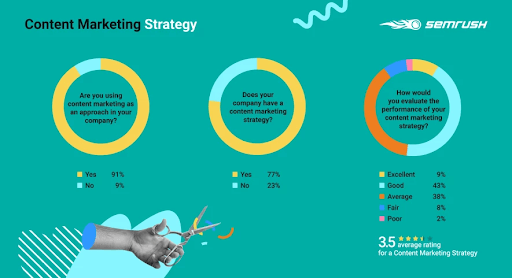
You can optimize your site for mobile devices by using the same SEO strategies you use for desktop computers. Search engine optimization is made easier by including the most relevant keywords in your title tag and meta description. You should also include a brief call-to action (CTA), in your meta descriptions to encourage clicks. Your website should contain relevant keywords and emojis in order to grab your users' attention.
User-friendly content
There are a few more steps to optimize your website for mobile users. The first is making sure that it is mobile-friendly. Your website should avoid crawl errors and focus on the user experience. Adobe Flash must be removed from your website as it is not supported on many mobile devices. It is essential that your website is clear and easy for users to navigate. You should make your text large enough to be read, and use legible fonts. Your content should also be optimized for mobile users, as their search intent is different than those of desktop users.
Page speed
The user experience on a mobile device differs from that on a computer. Users will seek out information that is immediately available, so a slow website can lead to a bounce. Mobile speed optimization is crucial. Google PageSpeed Insights allows you to test your page's speed on different devices. Mobile-friendly websites are easier to load and more likely to convert.

Canonical tags
Canonical tags are notorious for making duplicate content worse. The canonical URL is what redirects to and it should not have duplicate content or almost identical copy. Some SEOs make the mistake of passing link signals using canonical tags. However, this is not the right way to do it. Read on to learn how to properly use canonical tags in your SEO strategies for mobile devices.
Relevant keywords
If you have a mobile website, then local keywords are a vital part of your SEO strategy. These keywords can help boost your website's local ranking and can easily be found using keyword research tools such as Keyword Intelligence. For untapped local keyword possibilities, you can simply select your location and language. The tool will give you a list of local keywords. Remember that local search volume can vary from one location to the next, so make sure you target keywords that are relevant to your area.
Google SERPs: Featured Snippets
Featuredsnippets are pages that appear at the top search engine results pages. They are designed to give users the best answers to their questions. These snippets are often sourced from high-ranking websites, which makes them great for reducing clicks. A featured snippet will help you jumpstart your website's search engine optimization efforts.

FAQ
How often does SEO need be done?
Maintaining your links properly will mean that you won't have to run SEO campaigns or update them often. However, if you stop maintaining your links and rely solely on organic traffic, you could lose out on potential business.
Generally speaking, monthly SEO updates are recommended for small businesses. For larger companies, quarterly SEO updates may be necessary.
What should I know about backlinks
Backlinks refer to links linking to a webpage from another site. They are one of the most powerful tools used by search engines to determine where a web page belongs in the search results. Backlinks prove that other people believe your content valuable. A lot of quality backlinks is necessary if you want your content to rank high in search engine results.
How do you create an SEO strategy?
To create an effective SEO strategy, you must first understand what you want and how you intend to achieve it. This allows you organize your content around those goals.
The second step in the process is to work on your keywords. Through keyword research, you can get insight into what people want to find by using certain words. You can then write articles about those topics by using this information.
When you write your articles, be sure to include your targeted keywords. Each article should be optimized by adding relevant images and videos. Lastly, link to other related pages wherever possible.
Now it's time for you to optimize the content that you have written.
What are the differences between SEO strategies?
Search engine optimization (SEO), search media optimization (SMO), as well as pay-per click advertising (PPC) are all examples of different SEO strategies.
SEO is the process of optimizing content for keywords using text formatting, HTML codes, and other features.
This will ensure that your site ranks higher in search results pages.
Social media optimization is the process of optimizing your website so that it can be used on social networks, such as Twitter, Facebook, or Google+.
These help build your brand reputation online, making visitors more likely to visit your site when searching for related topics.
PPC ads also appear at the top Search Results Pages, showing relevant products & services.
Google paid search is the most used PPC ad type. These ads can be very effective, even though they cost a lot.
PPC advertising can also be done in other ways, such as display ads, video ads and sponsored post.
Statistics
- Deleting those 10k pages is one of the main reasons that he improved his site's organic traffic by nearly 90%: (backlinko.com)
- A 62.60% organic traffic boost to that page: (backlinko.com)
- 64% of marketers actively create SEO campaigns because they help hit multiple key performance indicators (KPIs), including increasing traffic, helping your site rank for relevant keywords, improving your conversion rate, and much more. (semrush.com)
- If two people in 10 clicks go to your site as a result, that is a 20% CTR. (semrush.com)
- Which led to a 70.43% boost in search engine traffic compared to the old version of the post: (backlinko.com)
External Links
How To
How to choose a SEO strategy that is right for you
The following factors can help determine which SEO strategy is appropriate for your website.
-
Keyword Research
SEO has one primary goal: to rank highly in search engines for specific terms. You should also identify negative keyword phrases that don't relate to your audience.
-
Content Strategy
Content marketing is important for all businesses. Websites that sell eCommerce products or services need to be ranked high in search results pages. This can increase conversion rates and drive sales.
Therefore, it is important to create engaging, relevant content that solves or offers solutions.
-
Link Building
Links play a vital role in ranking high on search engines. So, you need to focus on creating valuable relationships with other websites.
-
Social Media Marketing
If you have a strong presence on social networks, you might want to use these channels to promote and market your brand. Share your material on these social media platforms to encourage others.
-
Website Structure
While it is true that good design does not necessarily lead to higher rankings, it can have an impact. Clear and simple layouts lead to better conversions. It is important that your site loads quickly in order to make sure users don’t leave the site without completing their transactions.
-
Mobile Optimization
Mobile devices account for almost half of internet usage today.If your website isn't optimized for mobile, you could lose out on traffic and potential clients.
-
Local Search
This is when you target local markets and not national ones. You optimize your website to be found in local searches, such as "restaurants nearby me" or "businesses around my area." It is easier for local SEO to rank well because people trust recommendations from relatives, friends, colleagues and colleagues.
-
Ecommerce Website Development
Ecommerce websites benefit from a range of different types of SEO strategies.For example, they often perform best when they're optimized for both desktop and mobile devices. Additionally, they are more likely to rank higher for longer-tail keywords.
-
Video Ranking
Video content ranks well in search engines. It ranks well for longer queries and gets more shares.
-
Branding
Branding is the process of designing a logo, product names, and messaging that gives your company its own identity and personality. This helps customers know who you are and what your company does.
-
Analytics Software
Analytics software allows you to track how visitors interact with your website.The information gathered through analytics can help optimize your efforts and increase conversions.
-
Email List Management
Email lists allow you to send emails directly to your target audience.You can send messages about new products, special offers, and promotions.
-
Blogging
Blogging is another way to generate quality backlinks. If you blog about your business, you'll get links from reputable sources.
-
Customer Satisfaction
Customer satisfaction is one of the most effective ways to get high-quality backlinks.When satisfied customers refer their friends and colleagues to your site, this will result in quality backlinks.
-
Content Marketing
Content marketing involves producing unique, useful, relevant content that educates, entertains, or inspires readers.
Engaging content will help build trust among your target audience and improve conversion rates.